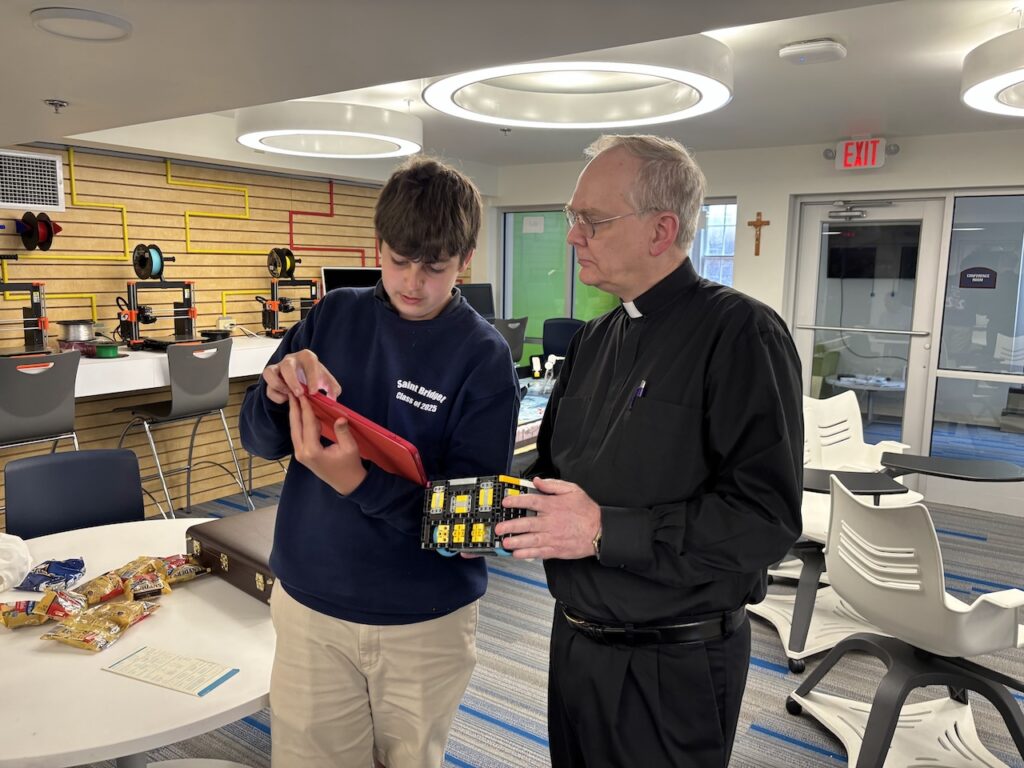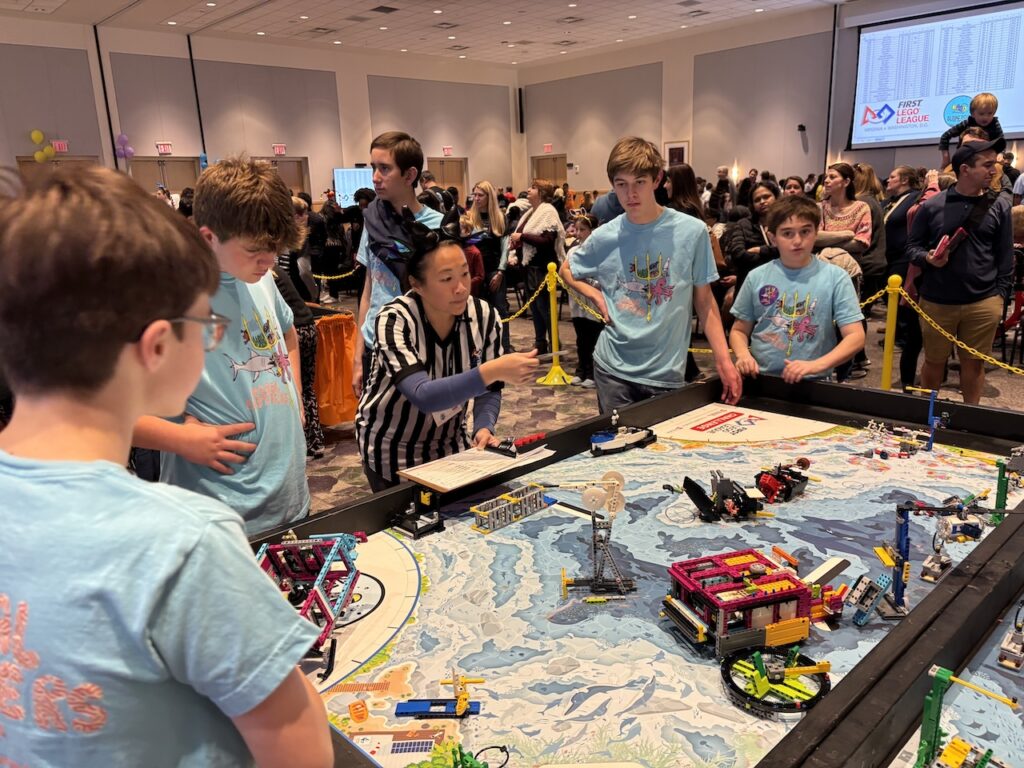Hundreds of students from around the world are getting ready to compete in an epic STEM showdown in Worcester, Massachusetts, including a team from St. Bridget School, Richmond. The FIRST LEGO League event takes place June 13-15 at Worcester Polytechnic Institute.
Dozens of robots pre-programmed by students will face off against each other. Though each robot is unique, they all share one thing in common: they have been built entirely with LEGO bricks.
FIRST (“For Inspiration and Recognition of Science and Technology”) is a global nonprofit robotics company founded by inventor and STEM enthusiast Dean Kamen. FIRST teamed up with the iconic LEGO Group in 1998 to create FIRST LEGO League, a way to introduce children to STEM through hands-on learning experiences.
“We are not using kids to build robots. We are using robots to build kids,” Kamen said.
Eric De Boer has worked at St. Bridget for 13 years and currently serves as its technology director. He sees STEM as increasingly vital for every student.
“Look around. Like it or not, agree with it or not, the world continues to increase its reliance on technology,” he said. “Having the ability to problem solve, think critically, design creatively, and communicate effectively are no longer 21st century skills; they are simply life skills.”
Robotics has become so popular among the student body that the school has three separate middle school robotics teams. While all three teams performed well in state and regional competitions, one team, the Coral Critters, earned a spot at the international event in Worcester.
Drawing inspiration from SpongeBob SquarePants, the students named their robot “The Crusty Crab.” This robot utilizes multiple attachments to lift and drop objects, and color sensors to direct it where to go. Students are not allowed to touch the robots once the challenge has started; the robots maneuver around obstacles based on their pre-programmed code.
Some of the missions for the robots include retrieving a treasure chest from a sunken ship, releasing a shark back into the ocean, and feeding krill to whales. All components of these obstacles are constructed with LEGO bricks. Coral Critters was awarded both the Core Values Award and the Robot Performance Award at the regional competition in November.

FIRST LEGO League’s core values are teamwork, fun, inclusion, discovery, impact, and innovation.
“The core values are a list of ways that students and teams participating in FIRST LEGO League can improve and become productive members of society,” said eighth grader Andy Schneider. “They also represent ways that we can work together and become a more efficient and effective team.”
“I always tell our teams that we have an advantage with core values in robotics because of our faith,” said De Boer. “The core values are what FIRST LEGO League wants its participants to exemplify while they compete. I tell our teams that our standard is even higher than FIRST LEGO League: we want to follow the values of Jesus.”
In addition to the robot component of the competition, teams also take part in an Innovation Project. This year, they needed to identify a real-world problem involving the ocean, and then come up with a realistic way to solve it.
Through their research, Coral Critters learned that scientists have to manually retrieve AUVs (Autonomous Underwater Vehicles) used for marine research every two days to recharge their batteries, a process that costs thousands of dollars each trip.
The Coral Critters are proposing that scientists use specialized solar-powered buoys with docks that can be used as wireless charging stations. The AUVs can be programmed to return to the chargers once their battery is low. This would save time, money, and fuel.
Eighth grader Mason Brown has been a member of the robotics team since sixth grade. He believes their innovation project reflects Catholic values.
“Our faith influences our innovation project because we are always trying to find a way to help others and to save the world,” Brown explained.
One of the team’s biggest supporters is Father Ken Shuping, pastor of St. Bridget. “I’m impressed by the way they work through it until they find a solution. They are innovative and eager to bring out their ideas,” Father Shuping said.
The students said they were shocked to learn that Father Shuping worked as a programmer and analyst for ten years before being ordained a priest. He visited the team to share his experience and love for technology.
“I had no idea that he had a similar interest to us,” said Brown. “We are lucky to have a priest who is so involved at the school.”
“Middle school is a hard time of life, and it’s hard to fit in,” said De Boer. “Robotics is a place where we focus on including others, and it can be a great way for kids to make or deepen friendships.”
Donate to St. Bridget’s robotics team.
Learn more about the Coral Critters.

